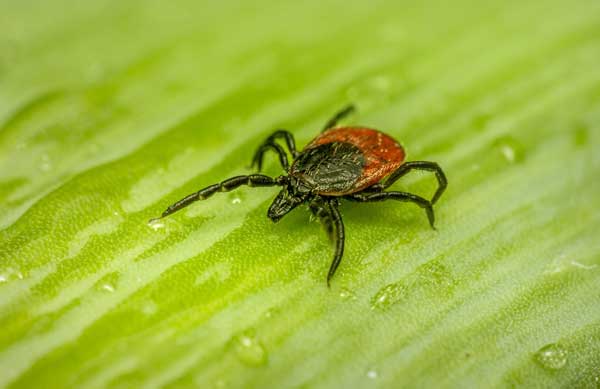Ticks are increasing in the Northeastern region of the United States due to climate change

[Ticks. Photo Credit to Pixabay]
The number of people suffering from ticks bites has been steadily increasing in the northeastern United States.
Among the ticks driving this surge is the lone star tick, a species that was originally confined to the southern states but has recently expanded its range northward, likely due to the effects of global warming.
The ticks have also been reported in western regions, which highlight their expanding territory.
Since ticks prefer warm temperatures in their living environment, the increase in the temperature of the Northeast during summer have likely prompted their migration from their original habitats.
This species is particularly concerning because it can transmit alpha-gal syndrome, a condition that triggers an allergic reaction to alpha-gal, a sugar molecule found in most mammals.
This syndrome is often referred to as a “red meat allergy,” as those affected must avoid consuming red meat to prevent allergic reactions, which typically manifest several hours after ingestion.
In severe cases, individuals with alpha-gal syndrome may need to carry an epinephrine auto-injector to counteract serious allergic reactions.
Although the severity of reactions can be managed, there is currently no cure for alpha-gal syndrome.
The condition is characterized by infrequent but serious allergic reactions, which may occur as rarely as once every five years.
Avoiding red meat remains the primary method of protection for those affected.
According to the Centers for Disease Control and Prevention (CDC), the number of people suspected of having alpha-gal syndrome was 110,000 between 2010 and 2022.
However, it is estimated that 450,000 people infected during this time have not been treated properly.
Despite the health risks associated with lone star ticks, they are considered less dangerous than blacklegged ticks, which transmit Lyme disease.
Lyme disease is caused by a bacterial infection spread by blacklegged ticks, which can spread throughout the entire body, possibly causing fever, headache, and skin rash called erythema migrans.
If left untreated, the disease can cause serious complications, affecting the nervous system and other parts of the body.
On average, about 476,000 people are diagnosed and treated for Lyme disease each year in the United States.
Unlike alpha gal-syndrome, Lyme disease is curable in most cases, with around 90% of patients recovering after antibiotic treatment.
Early detection and treatment are important for a faster and more effective recovery.
Ticks have long been a troublesome presence in the lives of humans, and the northeastern region, including states like New York, is particularly affected by ticks such as the lone star tick, blacklegged tick, and dog tick.
Being able to distinguish between different tick species is essential for preventing bites and avoiding serious illness.
To assist the public,, the U.S. Environmental Protection Agency (EPA) provides guidelines on tick prevention and proper care after a bite.

- Dongha Kim / Grade 12
- Branksome Hall Asia

![THE HERALD STUDENT REPORTERS [US]](/assets/images/logo_student_us.png)
![THE HERALD STUDENT REPORTERS [Canada]](/assets/images/logo_student_ca.png)
